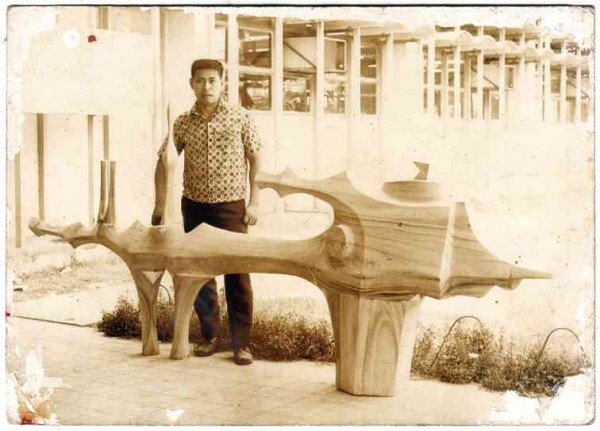
The past weeks have revealed that artworks and important art memorabilia have been lost in the hands of government.
During a forum at the 2013 ManiArt fair in Taguig City last Oct. 19, Sylvia Amorsolo-Lazo revealed that the National Museum had lost the memorabilia of her late father, National Artist Fernando Amorsolo.
Last week, the Art Association of the Philippines reported the loss of the four-foot bronze sculpture by Juan Sajid Imao at the Kanlungan ng Sining at Rizal Park, run and managed by the National Parks Development Office.
The twin developments may be deja vu to the Imao family because the patriarch of the family, National Artist Abdulmari Asia Imao, Juan Sajid’s father, has revealed that he had lost a key sculpture at the Manila City Hall in the 1980s, not far from Rizal Park and National Museum.
The dimensions of the artwork that was lost were even more staggering, and thus the theft, even more shocking. According to the National Artist, the sizeable piece, titled “Torogan,” was an acacia-wood sculpture that was over 7 feet in length, around 4 feet tall, and 2 feet in width—definitely not something anyone could have stowed away in a bag or wrapped in a shawl.
Ancestral structure
The work was Imao’s semi-abstract rendition of the Maranaw torogan, an ancestral structure that served as the sleeping place of royalty.
According to Imao, the same piece was brought to the Biennale de Paris to represent the Philippines along with other Filipino works years before the theft occurred. After the festival, it was brought back to the Philippines and was placed on the University of the East Ramon Magsaysay campus for public viewing.
Upon the request of an artist-friend, Imao lent his obra to be exhibited in a group show in Manila City Hall. That was the last he saw of his “Torogan.”
“When the exhibit was finished and I came back to claim my work, my contact in the City Hall said that it was no longer there and that they didn’t know where it was. It really made me think—how could a piece so large mysteriously disappear without their knowledge? If it had been taken, it would’ve required a vehicle, and not just any vehicle—perhaps a truck! I’ve wanted to see that piece again,” Imao said. “And maybe even donate it to a museum or an institution. I’ve been trying to locate the work for years now, but to no avail. In fact, I would be grateful to anyone who can provide information on the matter.”
Inside job
Although the theft remained unproven and was left at that, the incident hints at what may be one of the most common and easily executed forms of art theft in the country: the inside job.
Gallery owners say big art thefts occur right in the homes of artists and in public agencies that are supposed to safeguard art and cultural heritage.
“I’ve heard at least one National Artist complain of his works being stolen every now and then from his own house but he just can’t seem to be able to do anything about it,” said Jonathan Sy, owner of Gallery Big. “I think that, in the Philippines, more artworks are stolen in this fashion than any other.”
Imao stressed the importance of authentication and proper documentation as security measures. He also advised buyers to acquire pieces wisely and to seek the opinion of reputable galleries and expert collectors.
“As a possessor of the stolen artwork, you can be made criminally liable for violation of the anti-fencing law (possession of stolen property),” said lawyer Joel Butuyan of Roque and Butuyan Law Offices. “The artwork can also be taken from you, without reimbursement of the funds you used to purchase it. The buyer can lose the artwork because the real owner can recover the artwork from him without obligation to reimburse … except if purchased at a public auction.”
For Sy, art forgery is still more rampant than theft locally.
But sculptor Michael Cacnio, who lost a work during a break-in in an Alabang mall gallery in 2011, said he believes that art forgery is just another form of theft.
Cacnio urged top artists to come up with an authentication and filing process.
As for the buyers, Cacnio said, “Research about artists and works that interest you and arm yourself with the ability to know what is authentic and what is not, in order to avoid deception.”